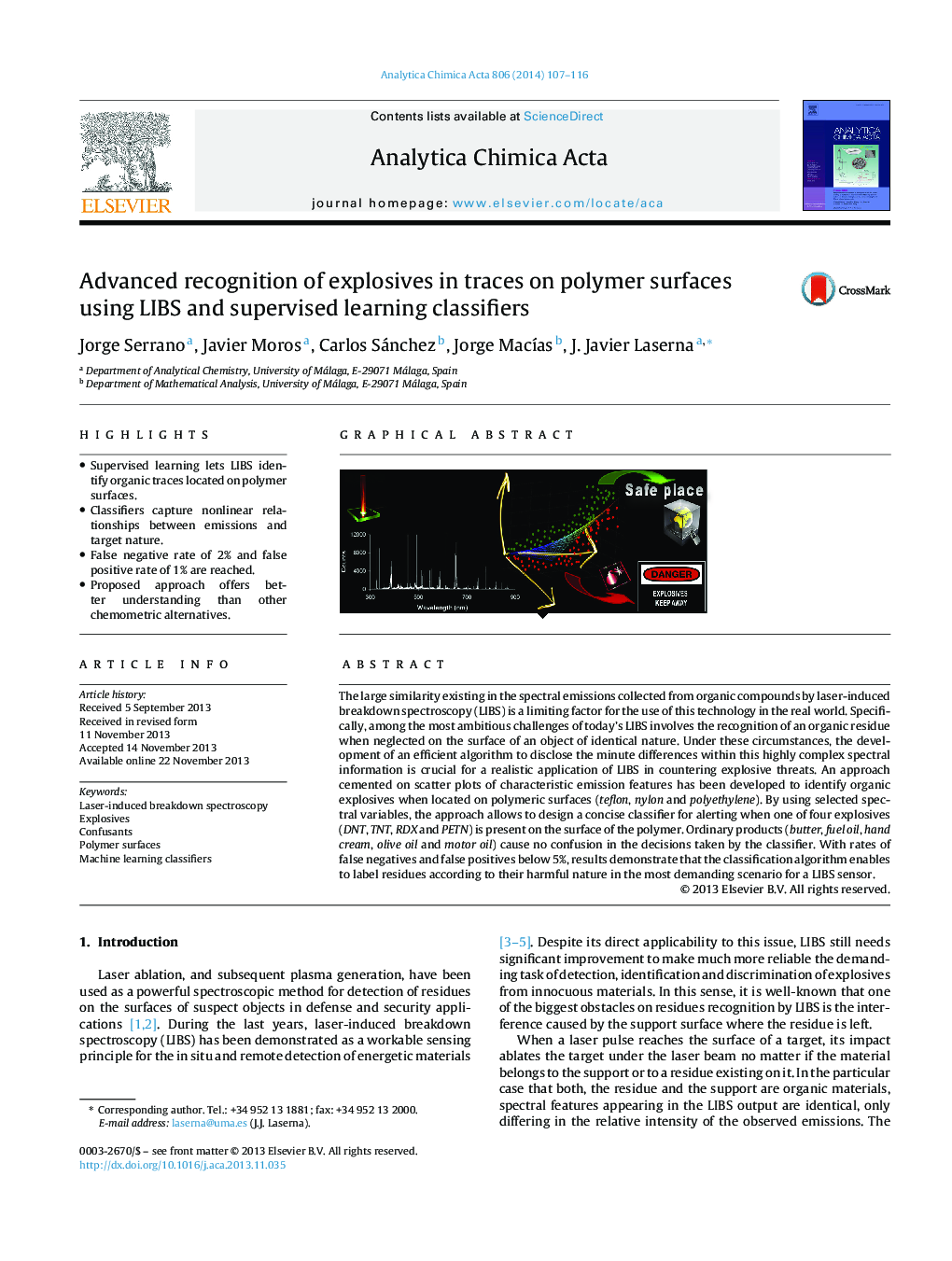| کد مقاله | کد نشریه | سال انتشار | مقاله انگلیسی | نسخه تمام متن |
|---|---|---|---|---|
| 1164972 | 1491026 | 2014 | 10 صفحه PDF | دانلود رایگان |

• Supervised learning lets LIBS identify organic traces located on polymer surfaces.
• Classifiers capture nonlinear relationships between emissions and target nature.
• False negative rate of 2% and false positive rate of 1% are reached.
• Proposed approach offers better understanding than other chemometric alternatives.
The large similarity existing in the spectral emissions collected from organic compounds by laser-induced breakdown spectroscopy (LIBS) is a limiting factor for the use of this technology in the real world. Specifically, among the most ambitious challenges of today's LIBS involves the recognition of an organic residue when neglected on the surface of an object of identical nature. Under these circumstances, the development of an efficient algorithm to disclose the minute differences within this highly complex spectral information is crucial for a realistic application of LIBS in countering explosive threats. An approach cemented on scatter plots of characteristic emission features has been developed to identify organic explosives when located on polymeric surfaces (teflon, nylon and polyethylene). By using selected spectral variables, the approach allows to design a concise classifier for alerting when one of four explosives (DNT, TNT, RDX and PETN) is present on the surface of the polymer. Ordinary products (butter, fuel oil, hand cream, olive oil and motor oil) cause no confusion in the decisions taken by the classifier. With rates of false negatives and false positives below 5%, results demonstrate that the classification algorithm enables to label residues according to their harmful nature in the most demanding scenario for a LIBS sensor.
Figure optionsDownload as PowerPoint slide
Journal: Analytica Chimica Acta - Volume 806, 2 January 2014, Pages 107–116